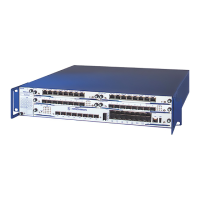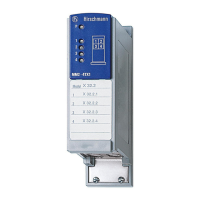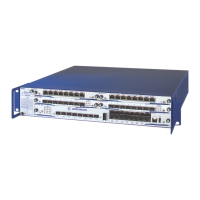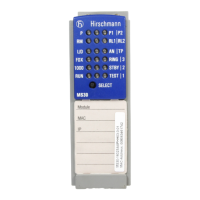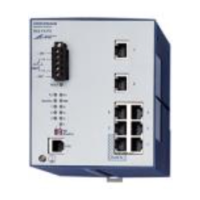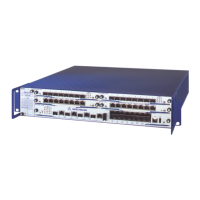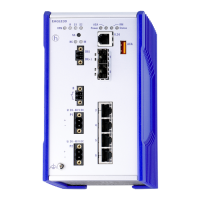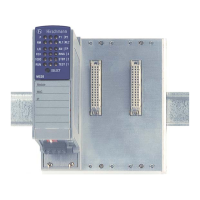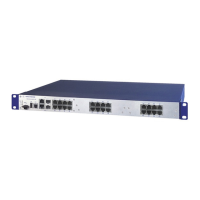Network Load Control
150
8.1
Direct Packet Distribution
UM Basic Configuration L3P
Release
7.1
12/2011
8.1.4 Entering Static Addresses
An important function of the device is the filter function. It selects data
packets according to defined patterns, known as filters. These patterns are
assigned distribution rules. This means that a data packet received by a
device at a port is compared with the patterns. If there is a pattern that
matches the data packet, a device then sends or blocks this data packet
according to the distribution rules at the relevant ports.
The following are valid filter criteria:
Destination address
Broadcast address
Multicast address
VLAN membership
The individual filters are stored in the filter table (Forwarding Database,
FDB). It consists of 3 parts: a static part and two dynamic parts.
The management administrator describes the static part of the filter table
(dot1qStaticTable).
During operation, the device is capable of learning which of its ports
receive data packets from which source address (see on page 149 “Multi-
Address Capability”). This information is written to a dynamic part
(dot1qTpFdbTable).
Addresses learned dynamically from neighboring agents and those
learned via GMRP are written to the other dynamic part.
Select the Switching:Global dialog.
Enter the aging time for all dynamic entries in the range from 10 to
630 seconds (unit: 1 second; default setting: 30).
In connection with the router redundancy, select a time ≥ 30
seconds.

